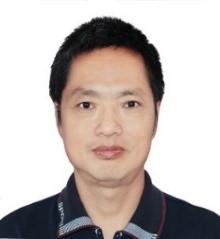
| Prof. Shixiang Xu Shenzhen University, China |
Biography: Shixiang Xu, born in 1965, completed his PhD in 1998 from Shanghai Institute of Optics and Fine Mechanics, China. His current position is a professor of Shenzhen University. Now, he also serves as a member of Laser Professional Committee of Chinese Optical Society, and one of the Councils of Guangdong Optical Society of China. In 2006, he was awarded Shanghai Pujiang talent Fund. In 2023, He has gained the First Prize of Shanghai Technical Invention. Up to date, has gained about 20 funds at National, provincial and ministerial-level, and has published more than 180 papers in peer-reviewed journals and authorized more than 30 patents. His research interests include ultrashort pulse laser, ultrafast imaging, terahertz optics, and manipulation of light field.

|
Prof. Yang Yue, SPIE Fellow, IEEE/Optica Senior MemberXi'an Jiaotong University, China |
Biography: Yang Yue received the B.S. and M.S. degrees in electrical engineering and optics from Nankai University, China, in 2004 and 2007, respectively. He received the Ph.D. degree in electrical engineering from the University of Southern California, USA, in 2012. He is a Professor with the School of Information and Communications Engineering, Xi'an Jiaotong University, China. Dr. Yue’s current research interest is intelligent photonics, including optical communications, optical perception, and optical chip. He has published over 270 journal papers (including Science) and conference proceedings with >12,000 citations, one book, six edited books, two book chapters, >60 issued or pending patents, >200 invited presentations (including 1 tutorial, >30 plenary and >70 keynote talks). Dr. Yue is a Fellow of SPIE, a Senior Member of IEEE and Optica. He is an Associate Editor for IEEE Access and Frontiers in Physics, Editor Board Member for four other scientific journals, Guest Editor for >10 journal special issues. He also served as Chair or Committee Member for >100 international conferences, Reviewer for >70 prestigious journals.
More speakers will be updated soon...


